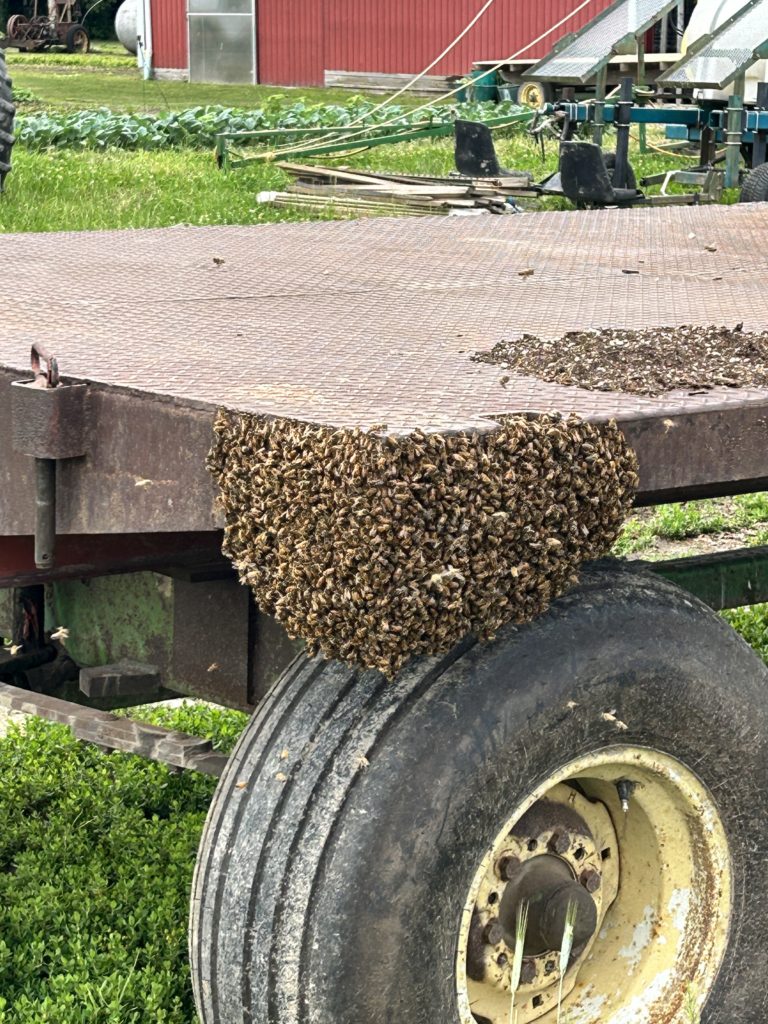Why Vegetable Farmers Rent Beehives
This past week, Kurt drove out in the dead of night to meet up with a mysterious visitor to our farm—the beekeeper. Every summer, we rent a pallet of beehives from our brother Airk, the beekeeper and owner of Benches Bees. This year, we have seven hives in all.
That’s right! We rent bees! They cost us about $75 a hive for the season. They always arrive at night because that’s when they sleep, making it the only safe time to transport them. Arik usually just leaves them on a movable trailer and parks it under a shady spot, so the bees don’t overheat.
The Role of Bees in Vegetable Production
Bees are an integral part of growing vegetables on a farm. Without bees, our crop’s production would be down about 70%. But what do bees do that is so important?
As vegetables flower, bees eagerly make their way into the blossoms to seek out the nectar that they will bring back to their hive and turn into honey. Along the way, they brush up against the pollen inside the plants. This pollen is carried from one plant to another as the bee forages, and sometimes the pollen successfully fertilizes another plant. The result: the plant’s flower turns into a vegetable! Without bees, there would be no pollination and no vegetables for your dinner table.

One of our hives swarmed in 2023. The bees were dripping off this wagon like water.
Why We Rent Beehives
Sometimes a farm requires extra help and can’t get enough pollination from the bees around its fields. That’s where renting bees comes in. Renting beehives ensures that our crops receive the necessary pollination to produce a bountiful harvest. It’s especially important when you grow things like cucumbers and melons in large quantities (like we do). When the hive is moved to fresh territory, there is always a flurry of activity as the bees excitedly get to work on their new crop. The beekeeper has to come about twice a summer to empty out the honeycombs and keep the bees busy.
Fun Facts About Bees
- Travel Distance: Bees can travel up to a mile in search of nectar.
- Communication: Bees use a “waggle dance” to communicate the location of food sources to other bees in the hive.
- Honey Production: A single honeybee will produce about 1/12 of a teaspoon of honey in its lifetime.
- Beeswax: Bees secrete beeswax to build the honeycomb structure where they store their honey and raise their young.
 The Decline and Recovery of Bee Populations
The Decline and Recovery of Bee Populations
In the last few years, there has been some concern about the decline of bee populations. Bees were simply disappearing without a trace, and no one knew why. This phenomenon was called “Sudden Hive Collapse.” Experts now believe they have finally discovered the cause: tiny mites. Hives have been sprayed against this mite, and now for the first time in six years, bees are making a comeback. That’s good news for you and me because bees help feed us!
